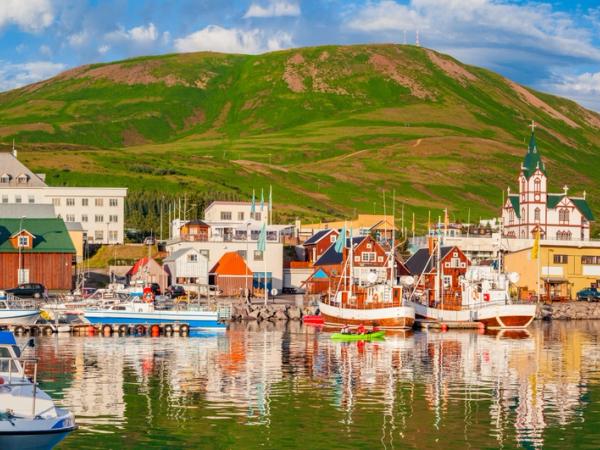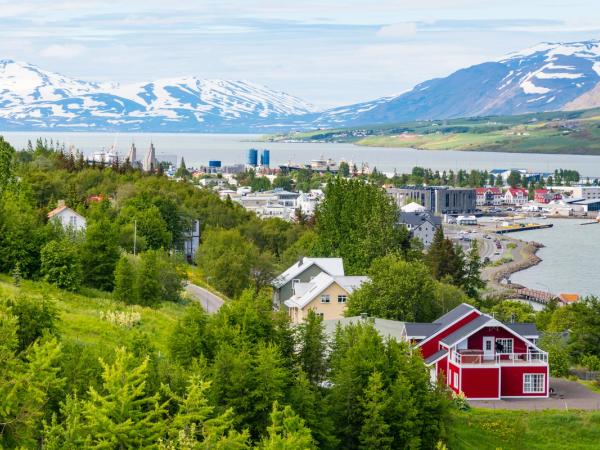
How many days do you need in Iceland?
If you’re planning a trip to Iceland, it’s quite likely that you’ve found yourself wondering: "How many days do I actually need to see it all?" This question can be tricky to answer because Iceland is so full of amazing places that it seems that you need a lot of time to explore everything this country has to offer. But don’t worry, we’re here to help. Depending on your travel goals, budget, and schedule, there are a lot of options to maximize your visit even if you don’t have as much time as you’d like.
The number of days you spend in Iceland will determine whether you focus on the popular tourist spots or venture into more remote and hidden regions of the island. So, how long should you stay in Iceland? Let’s take a look at a few itineraries depending on the length of your visit.
Key Takeaways
- You’ll need 7 to 10 days to have enough time to explore all the main tourist attractions.
- The best way to maximize your time is by trying to group things by proximity.
- Reykjavik is the best-connected city in the country, so use it as a base if you’re staying for a short or medium-length trip.
How many days in Iceland is Enough?
The perfect amount of time to spend in Iceland basically depends on how much of the country you want to see and how deeply you want to immerse yourself in its natural beauty. While you can cover the most famous highlights in a short trip, a longer stay will offer you the chance to explore the country’s remote and untouched regions and immerse yourself in Icelandic culture.
For this reason, there is no objective number of days, as it depends on the kind of trip you’re making. However, spending 7 to 10 days in the country will allow you to see a good number of things. This allows you to comfortably drive the full Ring Road, visit the iconic landmarks, experience some of the hidden gems, and take a deeper dive into the Icelandic culture and landscapes.
Iceland’s weather can be unpredictable, so having extra days in your itinerary is also a good idea in case of adverse weather or road closures. With 7 to 10 days, you won’t feel rushed, and you’ll be able to fully enjoy the adventure without constantly being on the move.
In this amount of time, you’ll have enough days to visit not only the South Coast and the Golden Circle but also venture to the north, the East Fjords, and the stunning Snaefellsnes Peninsula. Additionally, you will have time to embark on some fun activities, such as glacier hiking, whale watching, exploring volcanic craters, and soaking in natural geothermal baths. And you will be able to do all this at a relaxed pace, taking your time to enjoy everything properly. It will also allow you to explore off the beaten path and see some things many tourists skip.
If you have limited time, shorter trips of 3 to 5 days are still manageable and enjoyable, especially if you’re focusing on Reykjavik and nearby attractions. Let’s take a look at good ideas for all options, with different itineraries depending on the days you have to explore Iceland.

Short Trip – Up to 3 Days in Iceland
If you’re visiting Iceland for a short trip of 1 to 3 days, you’ll need to focus on a few key areas, likely around Reykjavik and the nearby attractions. While this kind of trip is ideal for layovers or a brief getaway, it will only give you a taste of what Iceland offers. Still, with some thoughtful planning, you will have time to see some incredible things
Day 1
Start your trip by spending your first day in Reykjavik, Iceland’s capital. Iceland’s main airport, Keflavík, is not far from the city, and there are good connections. Despite being a small city by global standards, Reykjavik is bursting with charm, colorful buildings, and a vibrant arts scene.
You can visit Hallgrimskirkja, Iceland’s largest church and one of the most iconic buildings in the country. There are also spectacular panoramic views of the city from its tower. From here, you can stroll through the city center, visiting attractions like the Harpa Concert Hall and the Sun Voyager sculpture. Reykjavik is also a great place to try Icelandic food. The city offers some of the freshest seafood, including local specialties like Icelandic lamb and skyr (Icelandic yogurt).
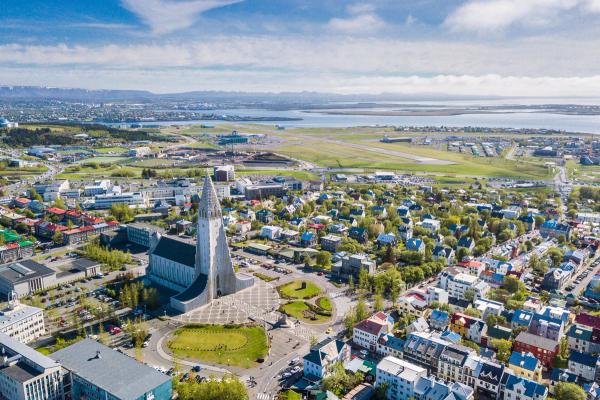
Day 2
On your second day, a good idea would be to do the Golden Circle. This scenic route, close to the capital, connects some of Iceland’s most famous attractions: Þingvellir National Park, Geysir Geothermal Area, and Gullfoss Waterfall. Þingvellir is not only geologically fascinating—where the North American and Eurasian tectonic plates meet—but it’s also historically significant as the site of Iceland’s first parliament, dating back to the year 930. Visiting Geysir is one of the best ways to learn about geothermal energy and geysers. At Gullfoss, you’ll marvel at the sheer power of one of Iceland’s most spectacular waterfalls.
Day 3
On your final day, a visit to the Blue Lagoon is a perfect way to unwind before heading home. It’s located between Keflavík Airport and Reykjavik, so you can even make a stop on your way to the airport. It’s probably the most famous of all the geothermal baths in Iceland, with its milky blue waters, rich in minerals, and astonishing lava fields around.
A short trip to Iceland is probably going to leave with the feeling of needing more. Even if it's short, you’ll still take home some unbelievable memories.

Mid-Length Trip – 4 to 7 Days in Iceland
A longer trip opens up more possibilities for exploration beyond the Reykjavik area. Having 4 to 7 days, you can see some of Iceland’s most iconic sights without feeling too rushed and even venture into more remote regions of the country.
Days 1-2-3
Start your trip as you would with the shorter itinerary we explained before—spending your first day in Reykjavik and exploring the Golden Circle on the second day. However, on your third day, a good option would be heading further east along the South Coast, where you’ll encounter some of Iceland’s most amazing landscapes.
As for most trips done in the country, take Route 1, also known as the Ring Road, Iceland’s main road, stopping first at Seljalandsfoss, a waterfall that is not only astonishingly beautiful, but you can also walk behind it. Just a short drive away is Skogafoss, another breathtaking waterfall, where you can climb a staircase to the top for a panoramic view of the surroundings.
Continue driving to the village of Vik, where you’ll find the stunning Reynisfjara Beach, known for its black sand, impressive basalt columns, and dramatic views of the Reynisdrangar rock formations rising from the ocean. It would be a good idea to look for accommodation in this area to continue the following day, so you don’t have to go back and forth from Reykjavik.
Day 4
On your fourth day, as you might still be in the south, go to Vatnajökull National Park, where the “ice” in Iceland comes to life. The park takes its name from a glacier, the largest in Europe, that crowns the area. Here, you can visit the Jökulsárlón Glacier Lagoon, where chunks of ice float on the water before drifting out to the nearby Diamond Beach. There, the blue of the ice makes a beautiful contrast with the black sand. If you are coming in winter and have time, a good option is doing a glacier hike or ice cave tour.
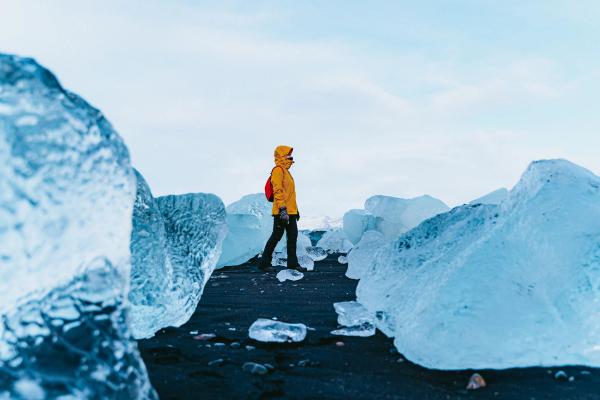
Days 5-6-7
If your trip lasts a little longer, up to six or seven days, you can take your time on the South Coast, or explore further north. A great option could also be going to the Snæfellsnes Peninsula. This amazing area is also known as "Iceland in miniature", because its landscapes encapsulated many of the things that have made Iceland famous.
This region is home to the third national park in the country, Snæfellsjökull National Park. Here, you can explore the volcanic craters, lava fields, and the iconic Kirkjufell Mountain, the most photographed mountain in Iceland.
You can finish your trip with the Blue Lagoon.

Long Trip – 7 to 10 Days in Iceland
This is the number of days that many expert travelers recommend to see and capture the essence of Iceland. If you’re able to spend 7 to 10 days in the country, you’ll have the freedom to explore much more of the country’s diverse regions. For example, you can make the whole Ring Road, making stops to see all the monuments you want to visit. This road encircles the island, passing through some of the most dramatic landscapes, including waterfalls, fjords, glaciers, and volcanic deserts.
Days 1-2-3
After spending your first two days exploring Reykjavik and the Golden Circle, head east on day three along the South Coast, visiting the iconic waterfalls, glaciers, and black sand beaches as mentioned in the previous section. However, instead of turning back, continue your journey east towards the East Fjords.

Day 4
This region is less crowded with tourists than the South Coast, but it’s still worth your time. With their dramatic cliffs and winding roads, these fjords are home to small and colorful fishing villages, such as Seyðisfjörður, and Iceland's only floating pools at Vök Baths. The region is ideal for those looking to experience Iceland’s quieter side.

Days 5-6-7
From the East Fjords, you can continue your journey to North Iceland, where you’ll encounter even more natural wonders. As with the Golden Circle in the south, there’s another fantastic scenic route in this region: The Diamond Circle. It has five main stops, all of them magnificent. Here, you can visit Lake Mývatn, with its geothermal landscapes and pseudo-craters.
Two of the best waterfalls in Iceland are also part of this route. One of them is Dettifoss, Europe’s second most powerful waterfall. The other one is called Goðafoss. It’s not as big as the other, but the color of the water and the surroundings make it a must-see place.
From there, you can head up to Ásbyrgi Canyon, an impressive geographical feature full of Norse mythology. The fifth stop is Husavík, known as the whale-watching capital of Iceland. If you want to see these huge mammals up close, there are many tours departing from the town’s harbor.
Akureyri, the second-biggest city in Iceland, is a great choice for accommodation, as it has more options than other places in the region.
Days 8 & 9
On your return to Reykjavik, and as we have explained in the previous itinerary, you can spend a day or two exploring the Snaefellsnes Peninsula, which offers stunning coastal views and plenty of hiking opportunities.
Alternatively, you could take a detour into the Westfjords, one of the most remote regions in Iceland, perfect for those looking for an off-the-beaten-path adventure. Please note that it’s not a good idea to go to this area in winter, as the roads can be closed.

Two Weeks in Iceland
For the ultimate Icelandic adventure, two weeks or more will allow you to not only see the famous landmarks but also dive deep into the country’s hidden gems. With this amount of time, you can fully circle the Ring Road, adding more stops to your route, like the Westfjords and the Highlands.
You’ll have enough time to explore each region thoroughly, allowing you to spend more time hiking, relaxing in geothermal pools, or taking part in activities like horseback riding or whale watching.
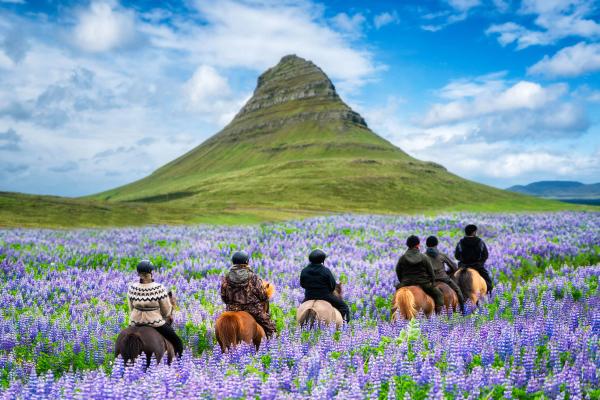
For example, you could spend extra days in Vatnajökull National Park, taking hikes around the glacier, visiting the ice caves, or exploring the remote fjords in the east. With time on your side, you could venture into the Landmannalaugar region in the Highlands, known for its colored mountains and volcanic landscapes.
The Westfjords, often skipped by those on shorter trips, will be a highlight. This region is one of the most remote and least visited parts of Iceland, but it’s also one of the most beautiful. Here, you can visit Dynjandi, a massive multi-tiered waterfall, and Látrabjarg, the westernmost point in Europe, known for its cliffs and puffin colonies. You’ll also find tiny fishing villages, hot springs, and endless opportunities for outdoor activities in this region.
Two weeks will give you a much deeper understanding of Iceland’s culture, landscapes, and history. You’ll have the chance to experience the country at a slower pace. It also gives you the chance to adapt your plans more if the weather conditions are not optimal.
Visiting Iceland in Different Seasons
When planning your trip to Iceland, it’s important to consider the time of year you’ll be visiting, as each season offers a different side of the country.
Summer (June to August)
It’s the peak travel season in Iceland, with long daylight hours and mild weather. This is the best time for road trips, as all the roads, including those in the Highlands, are accessible. The weather is ideal for hiking, camping, and outdoor activities. However, summer is also the busiest season, so expect higher prices and larger crowds at popular attractions.
Winter (November to March)
Visiting Iceland in winter is a completely different experience. While the days are short, with only a few hours of daylight, this is the best season for seeing the Northern Lights. The snowy landscapes transform Iceland into a winter wonderland, and activities like ice caving and glacier hiking are at their best during this time. However, winter weather can be harsh, with snowstorms and road closures, so it’s important to plan for flexibility in your itinerary. It’s important to check the road status before starting your day.
Spring (April to May) and Autumn (September to October)
These two seasons, although different, offer similar conditions regarding weather and crowds. They are the shoulder seasons, offering a quieter and more affordable travel experience. In spring, the snow starts to melt, revealing lush green landscapes and showing the best side of the waterfalls. Then, in the fall, the autumn colors make the scenery even more magical. Both seasons still offer a chance to see the Northern Lights, and while the Highlands may be closed, the main tourist routes remain accessible.
Travel Tips
- Rent a car: It doesn’t matter how long you’re going to stay in Iceland, having your own car is the best way to explore the country. This way you can make up your itinerary, maximize your time, and enjoy everything at your own pace. It’s a good idea to familiarize yourself with Iceland’s roads system and always check the conditions before starting your day.
- Book in advance: Iceland’s growing popularity means that hotels, guesthouses, and campsites can fill up quickly, especially in the summer months. Book your accommodation well in advance, particularly in popular areas like the South Coast and Reykjavik. This also applies to the most popular destinations.
- Pack for the weather: Iceland’s weather is famously unpredictable, and it can change instantly. So pack layers, even if you’re visiting in the summer. A good waterproof jacket and sturdy hiking boots are essential, and don’t forget a warm hat and gloves. The wind can be strong, especially near the coast, so be prepared for all kinds of conditions.
- Respect Nature: Iceland’s natural landscapes are incredibly fragile, and the country is serious about preserving its environment. Always stay on marked paths to avoid damaging the vegetation, and don’t disturb the wildlife. Follow the ‘leave no trace’ principle.
Conclusion
Iceland is a destination full of natural wonders, amazing landscapes, and a vibrant cultural life. It’s a place well worth a visit -or several if you can. It doesn’t matter if you are coming for a quick getaway or a two-week adventure; the time you spend in Iceland will leave you with unforgettable memories.
The perfect amount of time for a trip to Iceland depends on your travel style, but with a week to ten days, you can experience much of what the country has to offer, from the most famous sites to hidden gems.











